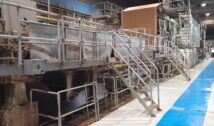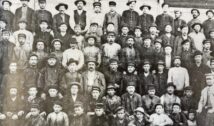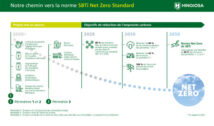
Commenting on the results, Sappi Chief Executive Officer Steve Binnie said: “An initially strong start to the year was unfortunately offset by weak graphic paper markets and lower dissolving wood pulp (DWP) prices driven by the ongoing trade wars and slower economic growth in various geographies. Our EBITDA declined by 10% year-on-year due to lower dissolving wood pulp prices and weak graphic paper demand. Our strategy to diversify our product portfolio into higher margin segments continues to deliver positive results.”
“The trend towards paper-based packaging in consumer segments continues, and we experienced stable demand for containerboard in the South African market. The recent projects to increase capacity at each of the DWP mills and convert capacity at Somerset and Maastricht Mills towards packaging boosted sales volumes in each of these segments during the year, and for the quarter delivered improved margins, thereby lessening the impact of weak graphic paper markets.”
Reflecting on the fourth quarter, Binnie indicated: “I am pleased that we were able to generate cash of US$173 million in the quarter thereby ending the year with net debt at US$1,501 million. This was done by tightly managing working capital and postponing discretionary capital expenditure.”
Looking forward, Binnie stated: “Due to the current very weak pricing in the DWP market and with paper markets yet to show signs of a sustained recovery in demand, we expect EBITDA in the first quarter of financial year 2020 to be below that of 2019. Management have taken a number of steps to mitigate the effect that the current uncertain market conditions and low DWP prices are having on the profitability and leverage of the group. These steps include tighter working capital management, the postponement and reduction in capital expenditure. The directors have furthermore concurred with management that it would be prudent to temporarily halt dividends until such time as market conditions improve.”
Financial summary for Q4 FY19 and full-year ended September 2019:
- EBITDA excluding special items
- For the quarter US$185 million (Q4 FY18 US$224 million)
- For the year US$687 million (FY18 US$762 million)
- Profit for the period
- For the quarter US$50 million (Q4 FY18 US$107 million)
- For the year US$211 million (FY18 US$323 million)
- EPS excluding special items
- For the quarter 10 US cents (Q4 FY18 19 US cents)
- For the year 44 US cents (FY18 60 US cents)
- Strong cash generation for the quarter of US$173 million (Q4 FY18 US$26 million)
- Net debt US$1,501 million (FY18 US$1,568 million)
The major factors which influenced the group’s results include:
- We experienced prolonged weakness in global graphic paper markets.
- In the second half of the year the graphic paper segment started to benefit from a reduction in input costs, particularly paper pulp, helping to mitigate the impact of lower volumes.
- The year started strongly for DWP markets, with pricing above long-term averages for the first six months. Thereafter, the combination of the impact from global trade wars on Chinese textile
- markets, excess viscose staple fibre (VSF) capacity and a weaker Renminbi exchange rate drove DWP prices to historic lows, impacting profitability in this segment.
In particular for the quarter:
- A resequencing of the expansion project at Saiccor Mill resulted in lower capital expenditure than previously forecast for the quarter. The capital expenditure of US$135 million related mainly to
- the expansion of DWP capacity and woodyard upgrade at Saiccor Mill as well as the completion of the Lanaken Mill PM8.
- The European business benefitted from widening margins between selling prices and input costs, however, this was not enough to offset the impact of the continued severe decline in graphic paper
- sales volumes.
- Profitability in the North American business improved sequentially in this seasonally strong quarter, however, weak domestic coated paper markets and lower DWP selling prices lowered profitability
- compared to last year.
- Increased packaging and DWP sales volumes in addition to sales price benefits from the weaker Rand/US$ exchange rate helped mitigate some of the cost increases for the South African business.
Outlook
The markets we operate in are expected to continue to be challenging in the coming year, and profitability is likely to be negatively impacted as a result. DWP pricing in particular will have a significant impact on earnings as this segment is a major contributor to our profits and cash flow generation. We have responded by reducing our capital expenditure both this past year and the next, and other than the 110,000 tons per annum expansion of Saiccor Mill which is currently underway we have not committed capital to any material project. We have reduced working capital, amended debt covenants, targeted further cost reductions and are evaluating various options regarding our paper machines in Europe in order to lower fixed costs and match capacity to demand.
DWP pricing remains under significant pressure, having declined to historic lows of US$638/ton at the time of writing this report, US$306/ton below that of a year ago. We believe that current pricing is below the cash cost of production for a significant proportion of global supply and is therefore unsustainable over any prolonged period. Underlying demand for DWP is still growing at rates consistent with our long-term forecasts. A recovery in DWP prices is likely to be prompted by a recovery in VSF prices which have been depressed by excess VSF capacity and a weak Chinese textile market.
In the packaging and speciality paper segment we are making good progress with customer acceptance in both the US and European markets and the ramp-up of volumes continues, aided by the shift from plastic to paper in many packaging categories. However, the slowing South African economy will likely impact domestic demand for containerboard in the coming year.
Global graphic paper markets continue to experience weakness due to a combination of economic factors as well as the ongoing shift towards digital media. Pricing has declined only marginally over the past quarter, and as paper pulp prices in Europe and North America approach those prevalent in China, margins should be maintained.
Capital expenditure in 2020 is expected to decrease to US$460 million as we complete the Saiccor Mill 110,000 tons per annum expansion project and some smaller European pulp mill debottlenecking projects. The payment of the adjusted Matane Mill net acquisition price of approximately US$158m will be made in the first quarter of the financial year, funded via a new term loan.
Forward-looking statements
Certain statements in this release that are neither reported financial results nor other historical information, are forward-looking statements, including but not limited to statements that are predictions of or indicate future earnings, savings, synergies, events, trends, plans or objectives. The words “believe”, “anticipate”, “expect”, “intend”, “estimate”, “plan”, “assume”, “positioned”, “will”, “may”, “should”, “risk” and other similar expressions, which are predictions of or indicate future events and future trends and which do not relate to historical matters, identify forward-looking statements. In addition, this document includes forward-looking statements relating to our potential exposure to various types of market risks, such as interest rate risk, foreign exchange rate risk and commodity price risk. You should not rely on forward-looking statements because they involve known and unknown risks, uncertainties and other factors which are in some cases beyond our control and may cause our actual results, performance or achievements to differ materially from anticipated future results, performance or achievements expressed or implied by such forward-looking statements (and from past results, performance or achievements). Certain factors that may cause such differences include but are not limited to:
- the highly cyclical nature of the pulp and paper industry (and the factors that contribute to such cyclicality, such as levels of demand, production capacity, production, input costs including raw material, energy and employee costs, and pricing)
- the impact on our business of adverse changes in global economic conditions
- unanticipated production disruptions (including as a result of planned or unexpected power outages)
- changes in environmental, tax and other laws and regulations
- adverse changes in the markets for our products
- the emergence of new technologies and changes in consumer trends including increased preferences for digital media
- consequences of our leverage, including as a result of adverse changes in credit markets that affect our ability to raise capital when needed
- adverse changes in the political situation and economy in the countries in which we operate or the effect of governmental efforts to address present or future economic or social problems
- the impact of restructurings, investments, acquisitions, dispositions and other strategic initiatives (including related financing), any delays, unexpected costs or other problems experienced in connection with dispositions or with integrating acquisitions or implementing restructurings or other strategic initiatives, and achieving expected savings and synergies, and
- currency fluctuations.

































